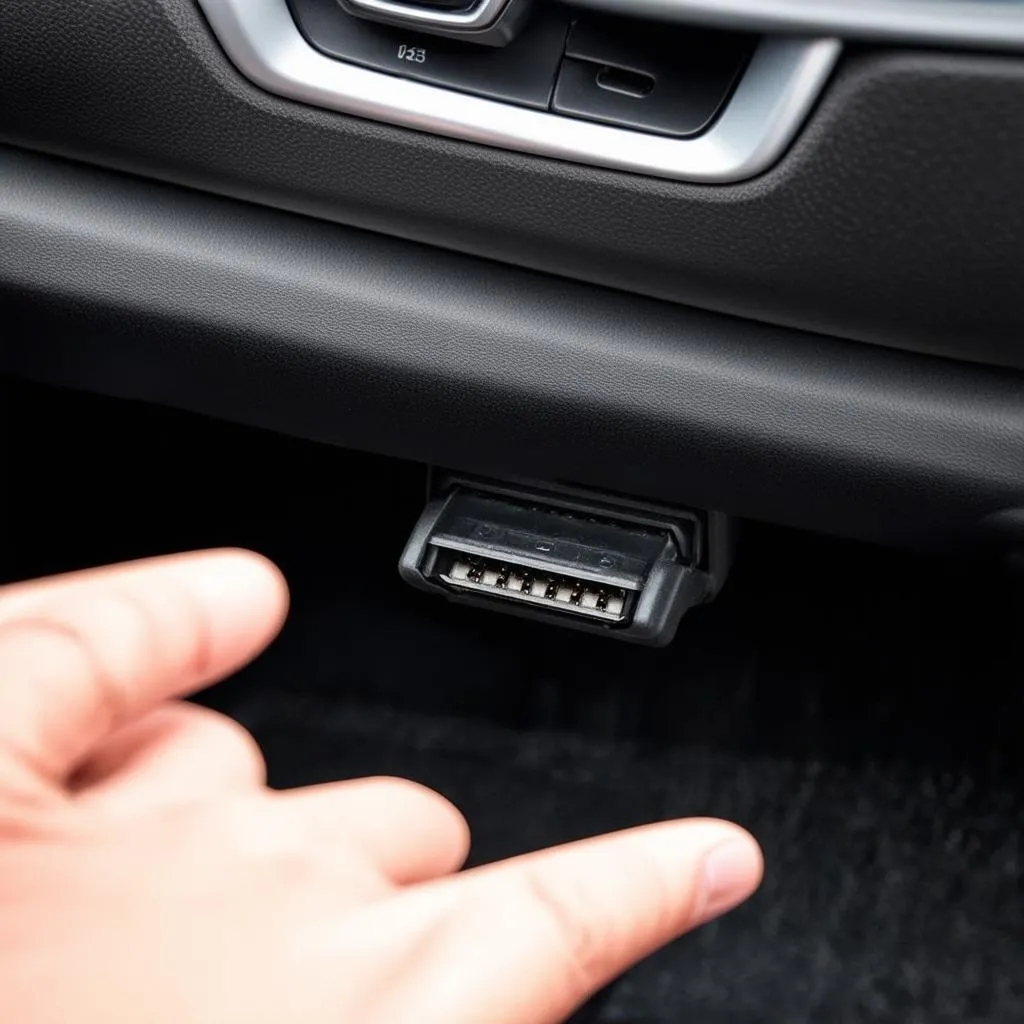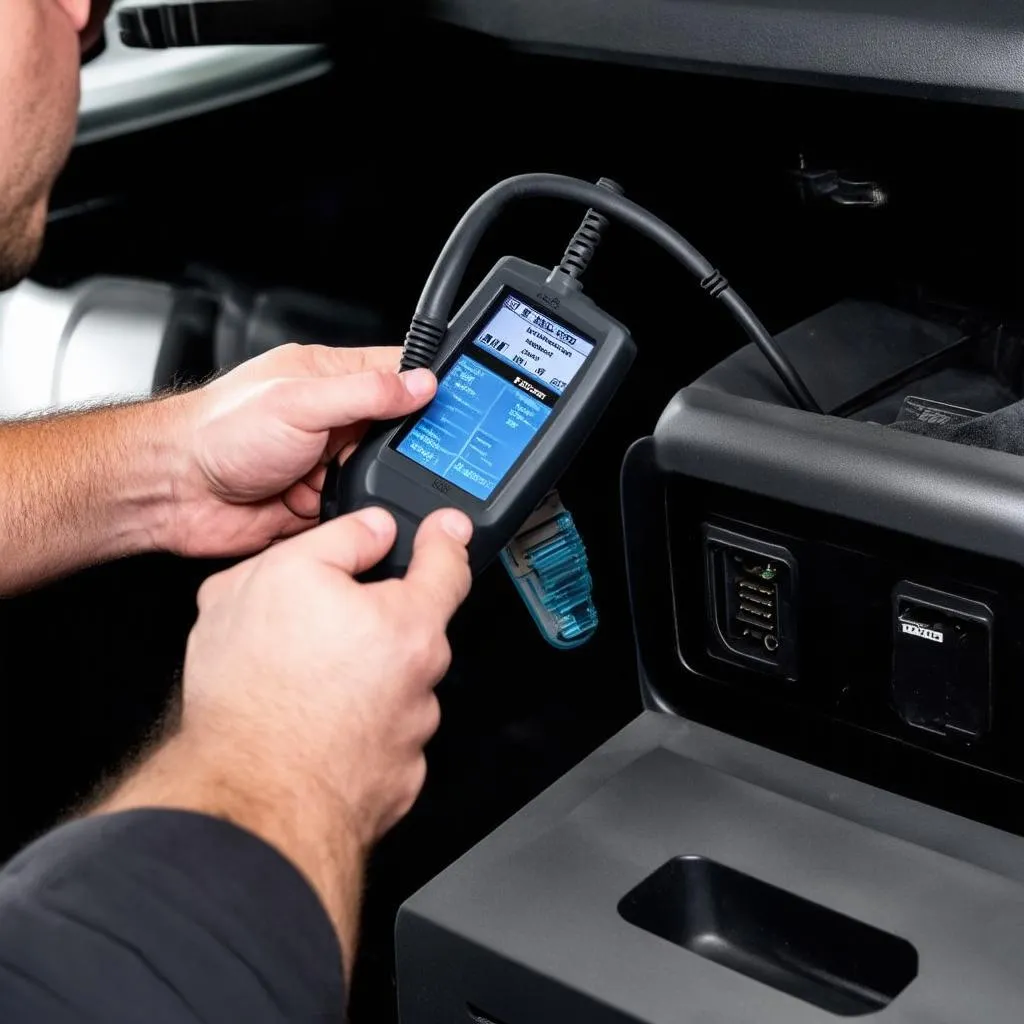Imagine this: You’re cruising down the highway, enjoying the smooth ride of your 2013 Honda Pilot, when suddenly, a warning light pops up on your dashboard. Frustrating, right? Before you start picturing expensive repairs, there’s a small, powerful tool that can give you valuable insight: the OBD port.
This unassuming little port, often tucked away under the dashboard, is like a window into your Pilot’s soul (or at least its engine). It allows you to connect a diagnostic scanner and communicate with your car’s computer system, retrieving information about what’s going on under the hood.
What is the OBD Port and Why Should I Care?
OBD stands for On-Board Diagnostics. Think of it as your Pilot’s built-in mechanic. This system continuously monitors various components and systems within your vehicle. When something isn’t right, it triggers a warning light on your dashboard and stores a corresponding code within the car’s computer. This is where the OBD port comes in handy.
Connecting a scanner to the OBD port lets you read these trouble codes, giving you a better understanding of the issue. This can save you time, money, and unnecessary headaches by:
- Identifying the problem: Instead of guessing what’s wrong, you’ll have specific codes to point you in the right direction.
- Avoiding unnecessary repairs: You can avoid being upsold on services you don’t need by knowing exactly what requires attention.
- Negotiating better repair costs: With a clearer understanding of the problem, you’ll be in a better position to discuss repair options and costs with your mechanic.
Locating the OBD Port on Your 2013 Honda Pilot
In most 2013 Honda Pilots, the OBD port is located beneath the driver’s side dashboard, near the steering column. It’s a small, trapezoidal-shaped connector with 16 pins. You can often spot it by its black plastic cover, which may have “OBD” or “OBD II” printed on it.
If you’re having trouble finding it, consult your owner’s manual – it will usually have a diagram showing the exact location.
 OBD Port Location
OBD Port Location
What Can You Do With the OBD Port on a 2013 Honda Pilot?
The possibilities are vast! Here are just a few things you can do:
- Read and Clear Diagnostic Trouble Codes (DTCs): This is the most common use. By reading the codes, you can pinpoint the source of warning lights or performance issues. Once the problem is fixed, you can clear the codes using the scanner.
- View Live Data Stream: Want to see your engine’s real-time performance? An OBD scanner can display live data like speed, RPM, coolant temperature, oxygen sensor readings, and much more. This information can be invaluable for diagnosing intermittent issues or simply monitoring your engine’s health.
- Perform Specific Tests: Some scanners allow you to run tests on components like the ABS system, airbags, or emissions system.
- Reset Maintenance Reminders: Forget to reset the oil light after a change? You can often do this through the OBD port.
 OBD Scanner in Use
OBD Scanner in Use
Choosing the Right OBD Scanner for Your Honda Pilot
Not all OBD scanners are created equal. Some are basic code readers, while others offer advanced features. When choosing a scanner for your 2013 Pilot, consider these factors:
- Compatibility: Ensure the scanner explicitly states compatibility with Honda vehicles, particularly the 2013 Pilot model year.
- Features: Decide what features you need. Basic code reading and clearing might be sufficient for some, while others might prefer live data, graphing, and advanced diagnostic capabilities.
- Budget: Prices can range from affordable to quite expensive. Set a budget beforehand to narrow down your choices.
A Word on Feng Shui and Your Car’s Energy
Now, let’s shift gears a bit. While the OBD port deals with the technical aspects of your car, maintaining its energy is equally important. In many cultures, cars are seen as extensions of our personal space. Just as we cleanse our homes for positive energy, some believe it’s beneficial to do the same for our cars. Consider using a car diffuser with essential oils, keeping the interior clean and clutter-free, or even hanging a small lucky charm on your rearview mirror to promote positive energy and safe travels.
Do You Have More Questions About Your 2013 Honda Pilot?
We’re here to help! You can find more information on our website, such as:
- Where is the OBD Port on My 2013 Honda Pilot?
- Understanding the OBD Port on a 2013 Honda Odyssey
- OBD Scanner Compatibility: Does It Work on All Cars?
- Troubleshooting Common Issues with the 2013 Honda CR-V’s OBD Port
For personalized assistance and expert guidance on diagnostic tools, don’t hesitate to contact us on WhatsApp at +84767531508. Our team of automotive specialists is available 24/7 to help you get the most out of your car’s technology.
Remember, your car is trying to communicate with you through its OBD system. Take the time to listen, and you’ll be rewarded with a smoother, safer, and more enjoyable driving experience.